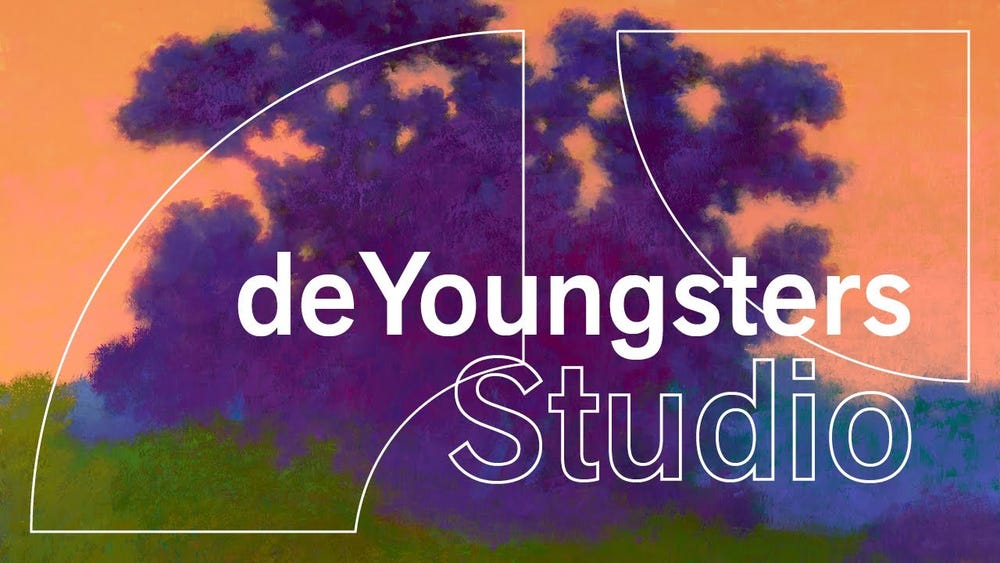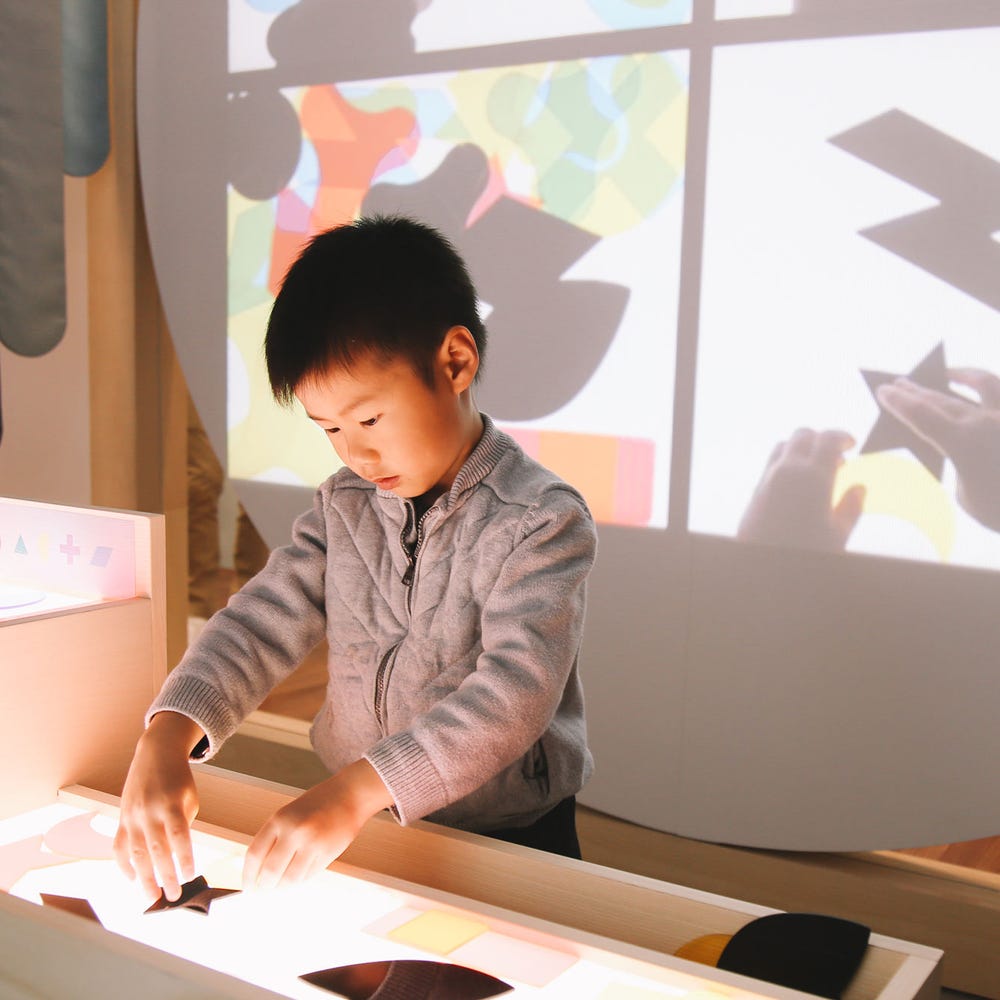de Youngsters Studio: Color Wheel Painting
By Jill McLennan, senior teaching artist
May 28, 2021
In this project, inspired by Sam Francis’s Helio (1986) and Richard Mayhew’s Rhapsody (2002), students learn about primary colors and how to mix secondary colors using paint. They learn how the color wheel describes the relationships between the colors while making a color wheel of their own.
Materials
- Scrap paper
- Liquid paint such as gouache or tempera, in red, yellow, and blue
- Plexiglass palette, or piece of wax paper or aluminum foil
- Paintbrush
- Cup of water
- Paper towel
- Cardstock or watercolor paper
Questions to Consider
- What are the primary colors? What are the secondary colors?
- How do you mix primary colors to make the other colors on the color wheel?
Steps
1. Set up your painting area away from your computer station. Cover the table with newspaper or other protective cover, then set up your paints and paintbrushes, palette, cup of water, and paper towel. Gather a few paintbrushes and squeeze out a little of each of the primary colors onto your palette.
2. To assist in making a color wheel, find two different-size round objects to trace, such as cans, cups, tape rolls, etc. Trace six circles in a circular pattern onto a sheet of cardstock or watercolor paper. Trace every other circle big and then small as you go around the color wheel, three large and three small circles total.
3. Paint the three large circles with the primary colors red, yellow, and blue. Start with red in the large circle at the top of the page. Washing your brush in between colors, paint yellow in the large circle on the right and blue in the large circle on the left.
4. Let’s try mixing red and yellow. Starting with some of the yellow, move it to a clean area on your palette, then add just a little red. Save some clean yellow for later. Add a little more red or yellow if needed to make a nice orange. Paint the orange into your color wheel in the small circle between the red and the yellow circles.
5. Let’s try mixing yellow and blue. Starting with some of the yellow, move it to a clean area on your palette, then add just a little blue. Save some clean yellow for later. Add a little more blue or yellow if needed to make a nice green. Paint the green into your color wheel in the small circle between the blue and the yellow circles.
6. Let’s try mixing red and blue. Starting with some of the red, move it to a clean area on your palette, then add just a little blue. Save some clean red for later. Add a little more red or blue if needed to make a nice violet. Paint the violet into your color wheel in the small circle between the red and the blue circles.
Reflect
After creating your color wheel, consider the following questions:
- What new color families did you discover?
- What kinds of colors can you make?
- If you add more of one color, what happens?
Share
We would love to see what you create! Email pictures of your artwork to
families@famsf.org or tag us on any social platform with #deyoungsters.




